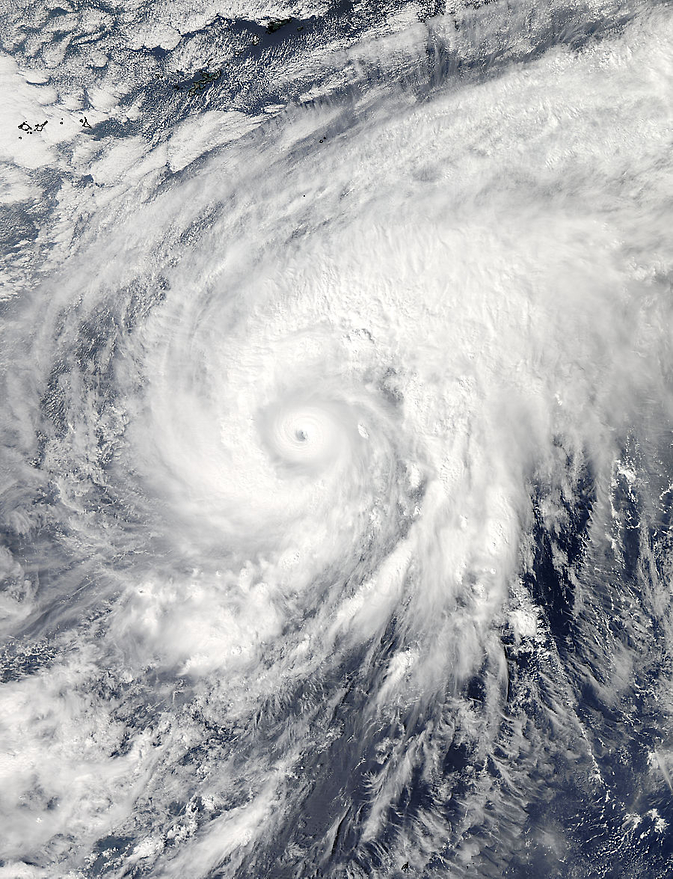NASA Sees Super Typhoon Nuri's Eye Open in 2 Days

On Nov. 3 at 04:20 UTC (12:20 a.m. EDT) NASA's Aqua satellite captured this image of Super Typhoon Nuri after it developed an eye. Image Credit: NASA Goddard MODIS Rapid Response Team
On Nov. 1, when the Moderate Resolution Imaging Spectroradiometer or MODIS instrument aboard NASA's Aqua satellite captured a visible image of Super Typhoon Nuri at 04:30 UTC (12:30 a.m. EDT) and it had not yet developed an eye.
On Nov. 3 at 04:20 UTC (12:20 a.m. EDT) MODIS on Aqua passed over Super Typhoon Nuri again after it developed an eye. By Nov. 3 the bands of thunderstorms spiraling into the center of the low-level circulation had become more tightly wrapped.
The image also showed that the widest band of thunderstorms were over the northern and eastern quadrants of the storm.
At 1500 UTC (10 a.m. EST) on Nov. 3, Nuri's maximum sustained winds had reached 155 knots (178.4 mph/ 287.1 kph), making it a Category 5 hurricane on the Saffir-Simpson wind scale. Some minor intensification is expected before the storm begins to weaken on Nov. 4.
Nuri was centered near 20.2 north latitude and 133.9 east longitude, about 514 nautical miles (591.5 miles/ 951.9 km) southeast of Kadena Air Base, Okinawa, Japan. It was moving to the northeast at 10 knots (11.5 mph/18.5 kph).
Nuri is expected to pass west of Iwo To on Nov. 5 as it continues moving in a northeasterly direction. For current weather conditions in Iwo To (also known as Iwojima), visit: http://weather.noaa.gov/weather/current/RJAW.html
Nuri is expected to intensify further before weakening. Adverse conditions will cause the storm to go on a weakening trend and the storm is expected to become extra-tropical after three or four days.
Rob Gutro
NASA's Goddard Space Flight Center
Media Contact
More Information:
http://www.nasa.gov/content/goddard/nuri-western-pacific-ocean/All latest news from the category: Physics and Astronomy
This area deals with the fundamental laws and building blocks of nature and how they interact, the properties and the behavior of matter, and research into space and time and their structures.
innovations-report provides in-depth reports and articles on subjects such as astrophysics, laser technologies, nuclear, quantum, particle and solid-state physics, nanotechnologies, planetary research and findings (Mars, Venus) and developments related to the Hubble Telescope.
Newest articles

Properties of new materials for microchips
… can now be measured well. Reseachers of Delft University of Technology demonstrated measuring performance properties of ultrathin silicon membranes. Making ever smaller and more powerful chips requires new ultrathin…

Floating solar’s potential
… to support sustainable development by addressing climate, water, and energy goals holistically. A new study published this week in Nature Energy raises the potential for floating solar photovoltaics (FPV)…

Skyrmions move at record speeds
… a step towards the computing of the future. An international research team led by scientists from the CNRS1 has discovered that the magnetic nanobubbles2 known as skyrmions can be…





















